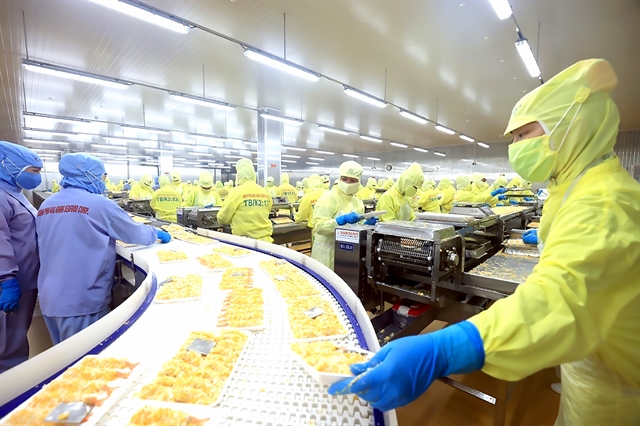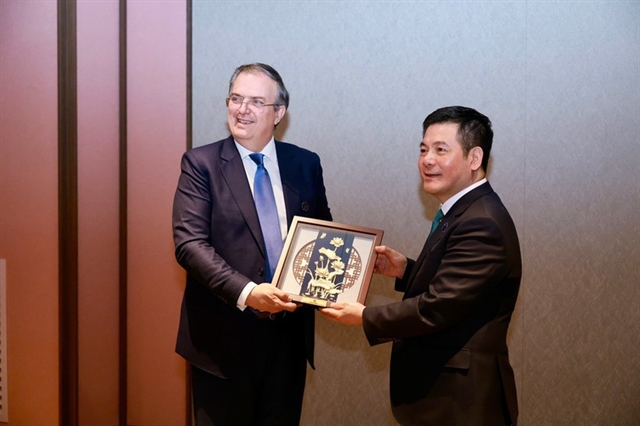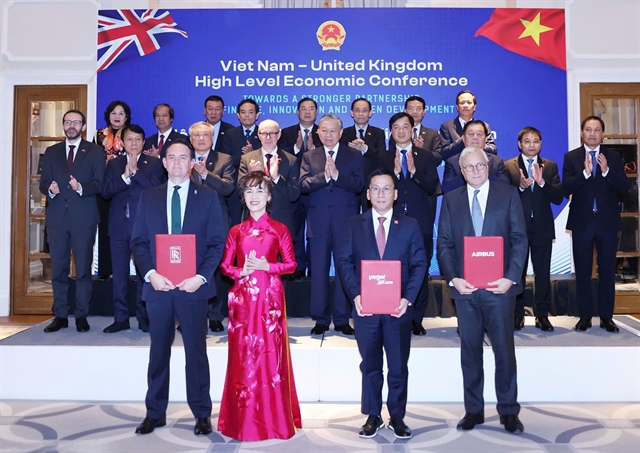 Economy
Economy

The country should halve its rice exports from the normal 7-8 million tonnes until 2020 because of difficulties exporters face and falling production due to climate change, according to the Việt Nam Food Association.
 |
| The country should halve its rice exports from the normal 7-8 million tonnes until 2020 because of difficulties exporters face and falling production due to climate change, according to the Viet Nam Food Association. — Photo nguoitieudung.com.vn |
HCM CITY — The country should halve its rice exports from the normal 7-8 million tonnes until 2020 because of difficulties exporters face and falling production due to climate change, according to the Việt Nam Food Association.
Speaking at a seminar in HCM City on Tuesday, Huỳnh Thế Năng, its chairman, said Việt Nam has exported 4.5 million tonnes of the grain so far this year, a year-on-year decrease of 25 per cent.
Exporters are facing challenges in the form of increasing supply and competition from traditional and emerging rice export countries like Thailand, India, Pakistan and Myanmar, he said.
Besides, major importing countries like the Philippines, Malaysia and China are increasing production to reduce imports and enhancing quality control of imports, he said.
For instance, China, the biggest importer and not a fastidious market, recently tightened its quarantine policy for Vietnamese rice, he said.
Drought and saltwater intrusion have seriously affected rice production in the Cửu Long (Mekong) Delta, the country’s granary, with output in the 2015-16 winter-spring rice crop falling by over a million tonnes, he said.
With the increasing construction of hydropower dams in the upstream of the Mekong River, the delta faces a possible threat of lack of water for rice cultivation, he said.
“All these force us to seek measures to resolve the problem as well as make our rice production more sustainable.”
The sector must be restructured to grow high-quality varieties and pay more attention on improving quality to meet the market’s demand, he said.
Areas seriously affected by climate change should switch to crops that can cope with climate change and are in demand, he said.
He suggested cutting exports to 3-4 million tonnes of high-quality rice a year until 2020, and 2-3 million tonnes a year after that instead of growing in large quantities and struggling to find buyers.
Phạm Thái Bình, director of Cần Thơ-based Trung An Co Ltd, a large rice exporter, said to expand the export market Vietnamese rice must be tasty, safe and cheap.
Consumers both at home and abroad are becoming more and more aware of what they eat and are willing to pay more for safe products, he said.
To ensure the three competitive factors, farmers and businesses must join hands to create large-scale rice fields, apply modern farming techniques and mechanise production, he said.
Delegates at the seminar agreed that Việt Nam must focus on building rice brands.
Deputy Minister of Industry and Trade Trần Quốc Khánh said: “We export rice for more than 30 years but many shortcomings still remain in our production and export, Việt Nam’s rice brand has not got a foothold in the world market.
“We need to build Việt Nam’s rice image by developing a national rice brand.”
The country needs to make global consumers feel it grows rice following high standards and completely trust the quality of Vietnamese rice, he said.
To do that, the sector must review zoning plans and what varieties are being grown, he said, adding that cultivation must be based on market demand rather than farmers growing first and then thinking about exports. — VNS




